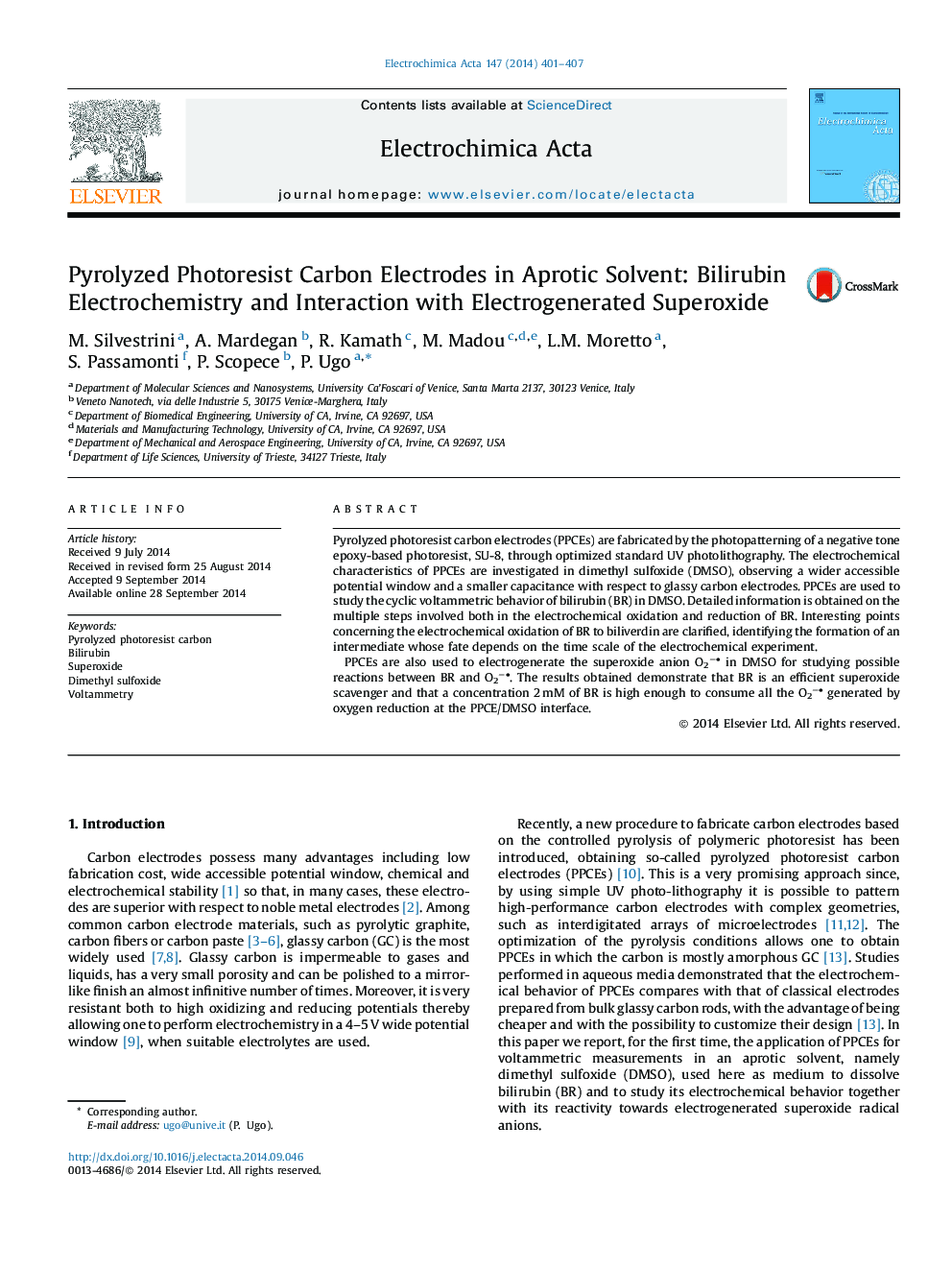| Article ID | Journal | Published Year | Pages | File Type |
|---|---|---|---|---|
| 185079 | Electrochimica Acta | 2014 | 7 Pages |
•Pyrrolized photoresist carbon electrodes (PPCEs) are characterized and applied in dimethylsulfoxide (DMSO).•PPCEs present a wider accessible potential window and a smaller capacitance with respect to glassy carbon electrodes.•The mechanism of the electrochemical oxidation and reduction of bilirubin is studied in detail.•Bilirubin is an efficient scavenger for the superoxide radical electrogenerated in DMSO.
Pyrolyzed photoresist carbon electrodes (PPCEs) are fabricated by the photopatterning of a negative tone epoxy-based photoresist, SU-8, through optimized standard UV photolithography. The electrochemical characteristics of PPCEs are investigated in dimethyl sulfoxide (DMSO), observing a wider accessible potential window and a smaller capacitance with respect to glassy carbon electrodes. PPCEs are used to study the cyclic voltammetric behavior of bilirubin (BR) in DMSO. Detailed information is obtained on the multiple steps involved both in the electrochemical oxidation and reduction of BR. Interesting points concerning the electrochemical oxidation of BR to biliverdin are clarified, identifying the formation of an intermediate whose fate depends on the time scale of the electrochemical experiment.PPCEs are also used to electrogenerate the superoxide anion O2−• in DMSO for studying possible reactions between BR and O2−•. The results obtained demonstrate that BR is an efficient superoxide scavenger and that a concentration 2 mM of BR is high enough to consume all the O2−• generated by oxygen reduction at the PPCE/DMSO interface.
Graphical abstractFigure optionsDownload full-size imageDownload as PowerPoint slide
